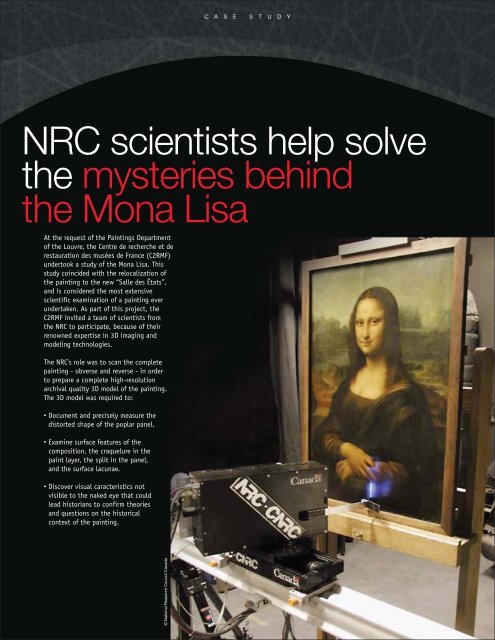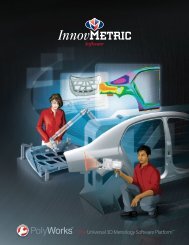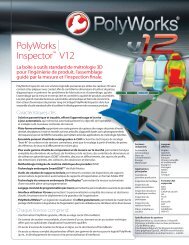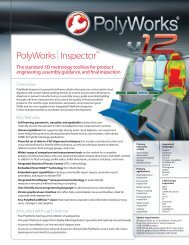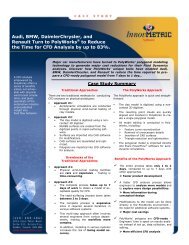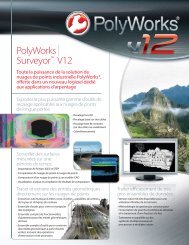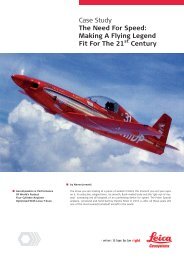PolyWorks and the Mona Lisa - Innovmetric Software
PolyWorks and the Mona Lisa - Innovmetric Software
PolyWorks and the Mona Lisa - Innovmetric Software
You also want an ePaper? Increase the reach of your titles
YUMPU automatically turns print PDFs into web optimized ePapers that Google loves.
C A S E S T U D Y<br />
NRC scientists help solve<br />
<strong>the</strong> mysteries behind<br />
<strong>the</strong> <strong>Mona</strong> <strong>Lisa</strong><br />
At <strong>the</strong> request of <strong>the</strong> Paintings Department<br />
of <strong>the</strong> Louvre, <strong>the</strong> Centre de recherche et de<br />
restauration des musées de France (C2RMF)<br />
undertook a study of <strong>the</strong> <strong>Mona</strong> <strong>Lisa</strong>. This<br />
study coincided with <strong>the</strong> relocalization of<br />
<strong>the</strong> painting to <strong>the</strong> new “Salle des États”,<br />
<strong>and</strong> is considered <strong>the</strong> most extensive<br />
scientific examination of a painting ever<br />
undertaken. As part of this project, <strong>the</strong><br />
C2RMF invited a team of scientists from<br />
<strong>the</strong> NRC to participate, because of <strong>the</strong>ir<br />
renowned expertise in 3D imaging <strong>and</strong><br />
modeling technologies.<br />
The NRC's role was to scan <strong>the</strong> complete<br />
painting - obverse <strong>and</strong> reverse - in order<br />
to prepare a complete high-resolution<br />
archival quality 3D model of <strong>the</strong> painting.<br />
The 3D model was required to:<br />
• Document <strong>and</strong> precisely measure <strong>the</strong><br />
distorted shape of <strong>the</strong> poplar panel.<br />
• Examine surface features of <strong>the</strong><br />
composition, <strong>the</strong> craquelure in <strong>the</strong><br />
paint layer, <strong>the</strong> split in <strong>the</strong> panel,<br />
<strong>and</strong> <strong>the</strong> surface lacunae.<br />
• Discover visual caracteristics not<br />
visible to <strong>the</strong> naked eye that could<br />
lead historians to confirm <strong>the</strong>ories<br />
<strong>and</strong> questions on <strong>the</strong> historical<br />
context of <strong>the</strong> painting.<br />
© National Research Council Canada<br />
2


